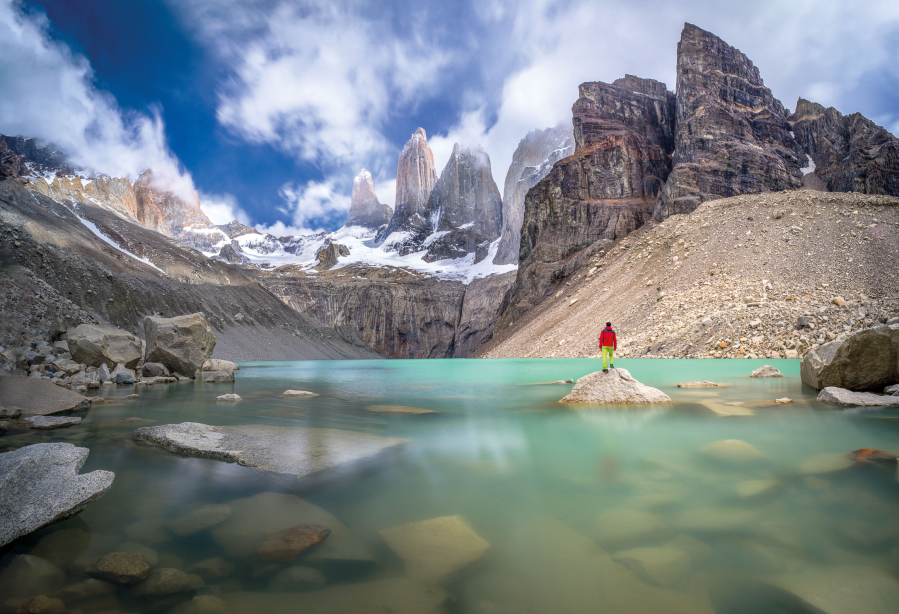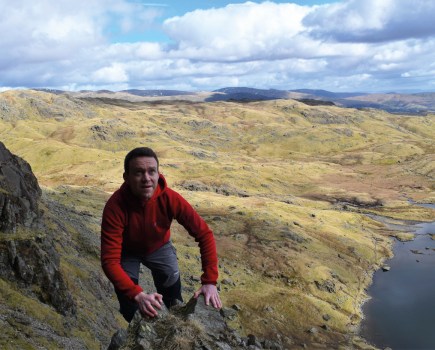There are some treks whose fame precedes them, even in non-hillwalking circles. Name drop Everest Base Camp or the Inca Trail on social media and your post will instantly sprout a forest of likes. It’s easy to dismiss these A-list adventures as crowd-pleasers – but there’s a reason they are so aspirational. These bucket list treks are some of the most beautiful you’ll find anywhere on Earth. They also present enough of a challenge to satisfy all but the most masochistic of walkers. Here’s how to get your trekking fix on five world-famous routes while avoiding the pitfalls of their popularity.
Six of the world’s best bucket list treks
- Kilimanjaro
- The Inca Trail
- Tour du Mont Blanc
- Torres del Paine ‘W’ Trek
- Everest Base Camp
- Bonus trek: The Ak-Suu Traverse
Bucket List Trek 1: Kilimanjaro (via the Machame Route)
Kilimanjaro – via the popular Machame Route – might be the ‘easiest’ of the Seven Summits to climb but is not a challenge to be underestimated or a trek to be dismissed.
Start: Machame Gate | End: Mweka Gate | Length: 62km / 37 miles | Ascent: 4,157m | Difficulty: Medium / high
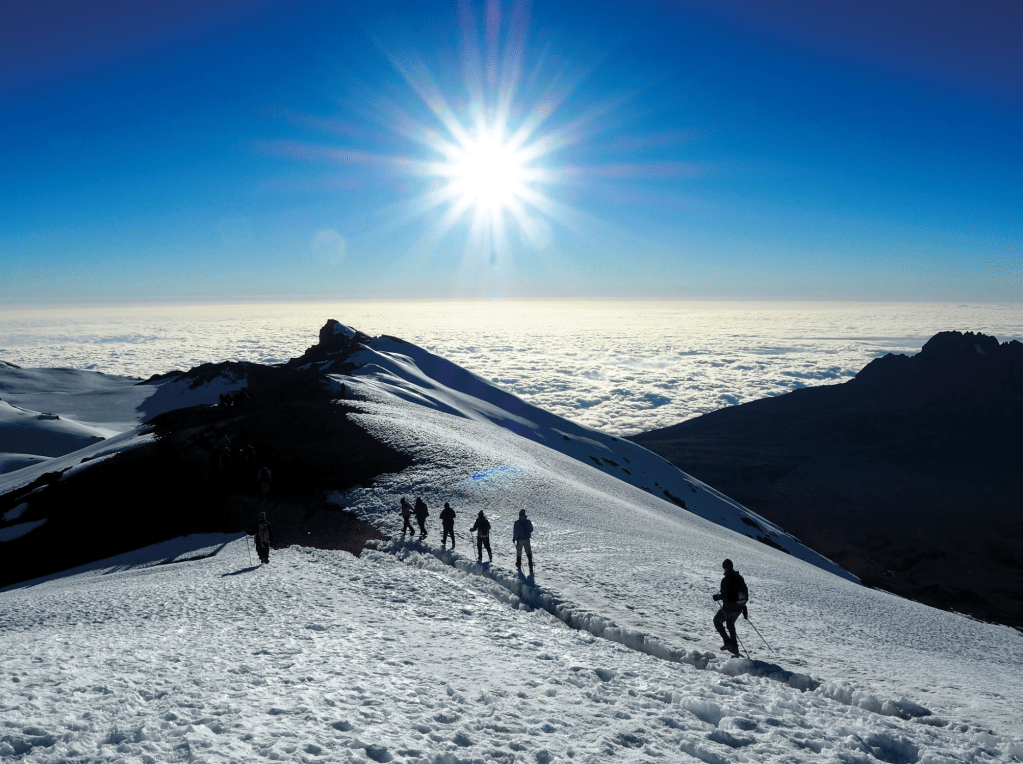
Hikers above the clouds of Kilimanjaro. Credit: Shutterstock
Kilimanjaro is often flagged as the easiest of the Seven Summits (the highest peaks on each continent). When it comes to the world’s tallest mountains, though, ‘easy’ is a relative term. It might be diminutive in comparison with Everest. At 5,895 metres it’s head and shoulders above three other peaks in the Seven Summits group. But Kili – even by the popular Machame route – is a test of both altitude resilience and endurance, and only 45-60% of trekkers make it to the summit. In other words: don’t underestimate the challenge.
From afar, Africa’s highest is one of the most recognisable peaks in the world. It hovers into view across the flat, game-roamed wilds of Tanzania’s Kilimanjaro National Park, its snow-streaked volcanic cone often rising above a skirt of thin cloud. At certain times of year, the full moon appears to balance on the mountain’s summit. Perhaps that’s why second-century sailors described it to Egyptian astronomer Ptolemy as Africa’s ‘moon mountain’.
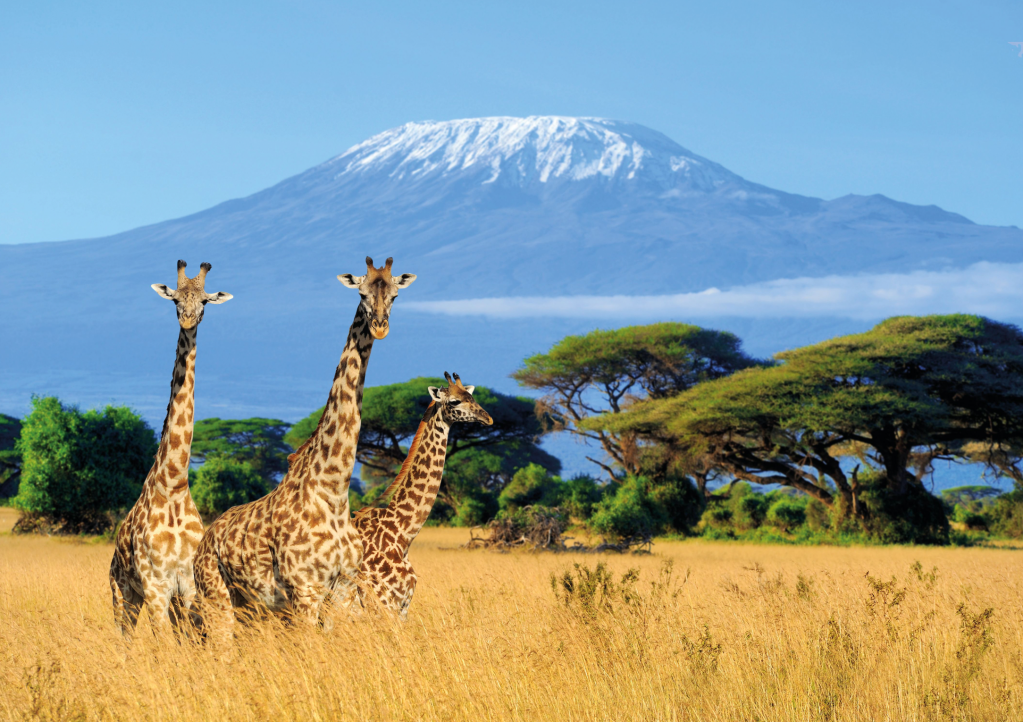
The Roof of Africa and the plains below are akin to two different worlds. Credit: Shutterstock
As well as visual splendour, Kilimanjaro has several significant claims to a place on any amateur mountaineer’s bucket list. It’s the highest free-standing mountain in the world – hence the dramatic way it strikes the eye across the Tanzanian plains. As you climb, you move from rainforest to moorland studded with giant lobelias followed by barren alpine desert and finally the ‘artic zone’ of the summit with the remnants of a diminishing glacier.
Barring the rarely-climbed Breach Wall Direct route, pioneered by Reinhold Messner and Konrad Renzler in 1978, there are no technical difficulties on any of the seven routes to the top. The only real barriers standing between you and summit success are fitness and altitude.
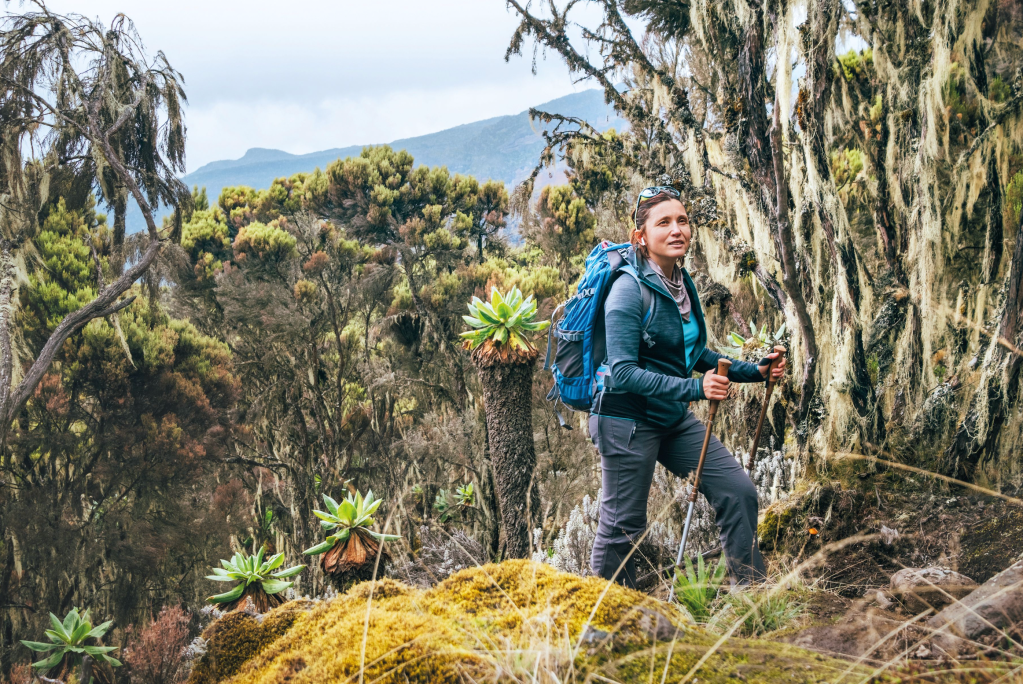
On the Umbwe route in the forest to Kilimanjaro mountain. Credit: Shutterstock
The alternative routes
Another option for anyone hoping to leave a lighter trace while avoiding the worst of the crowds is to attempt Kili by a less popular route. Machame is beautiful but busy, Marangu gets plenty of attention as the only route where climbers can stay in mountain huts; but longer Lemosho winds through rainforest bursting with wildlife, and scrambly, rarely-trodden Umbwe is worth considering if you’re an experienced trekker and you think you could handle the climb with less time to acclimatise.
Explore the full trekking guide to Kilimanjaro via the Machame route.
Bucket List Trek 2: The Inca Trail
Start: Piscacucho, Peru | End: Machu Picchu | Length: 43km (26 miles) | Ascent: 2,153m | Season: May – September | Difficulty: Medium
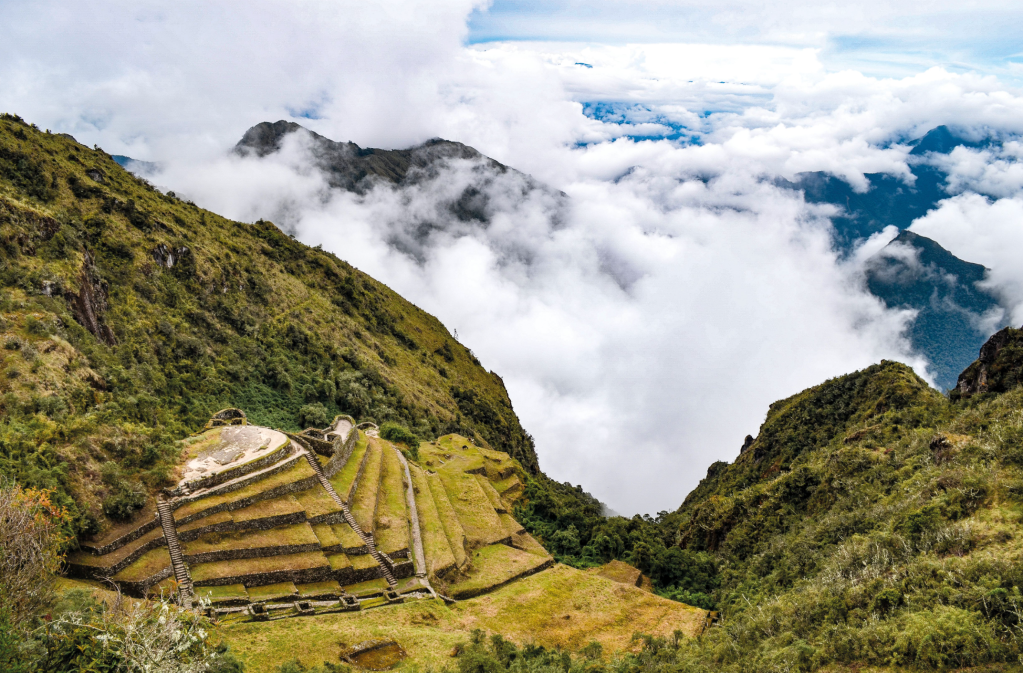
Phuyupatamarca, an impressive archaeological site located along the Inca Trail to Machu Picchu. Credit: Shutterstock
The ruined 15th-century citadel of Machu Picchu rises out of the tropical Peruvian forests like a custom-made Indiana Jones set. It was built by the Incan civilisation, and their construction skills weren’t half impressive. The site sprawls over five miles and its levels are linked by more than 3,000 stone steps. Exploring the place is a hillwalking challenge in itself, but the real draw for trekking types is the walk in.
The Inca Trail is only 43km / 26 miles long – a micro-expedition compared to some of the routes here – although most walkers still take three days to complete it. That’s because the way winds up through lush montane forests on high-altitude paths that cross three Andean passes and clock up over 2,000 metres of ascent along the way. Time it right and you’ll arrive finally at Machu Picchu’s Sun Gate in time to see the sun rising over the most impressive ruins of all.
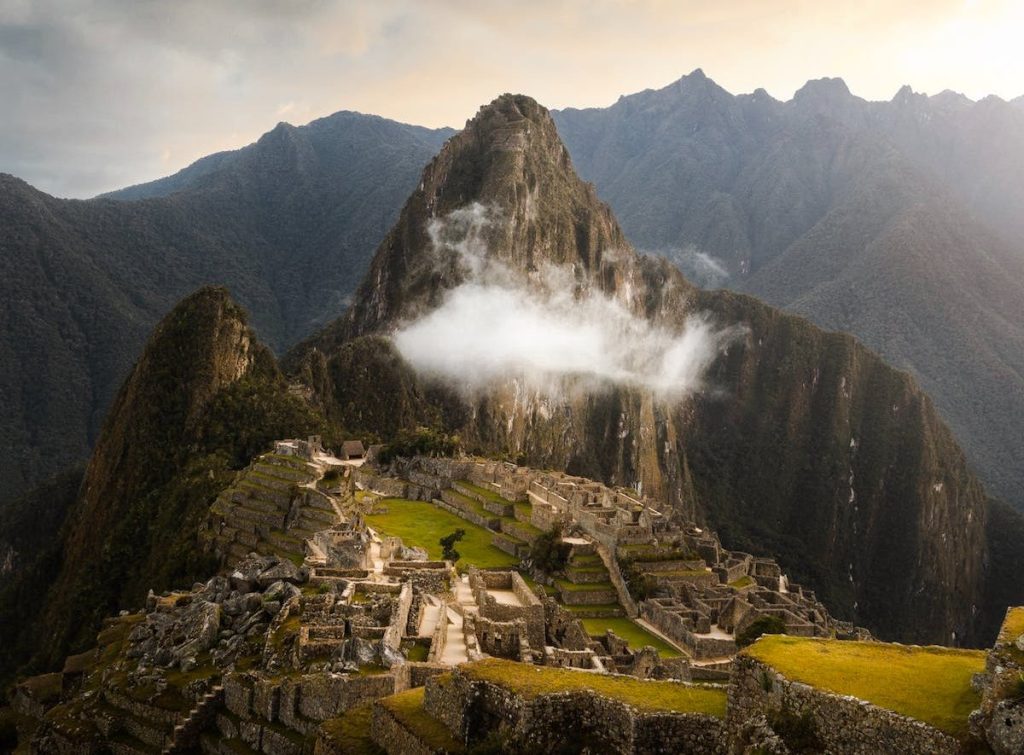
Sunrise over Machu Picchu. Credit: Trace Hudson
Aside from adjusting to altitude, there’s another advantage to setting a meandering pace. As the speedier trekkers filter past you, you’ll soon be left behind in a reasonably degree of solitude. You need both a permit and a guide for this route by law, and only 500 permits are issued per day. That means the trail never gets disgracefully busy – think of it as pleasantly sociable – but it also puts the kybosh on spontaneity. Permits need to be booked several months in advance, particularly if you’re walking during the dry season.
There are plenty of ways to tread more lightly on the landscape and to offer something back to the local community in return for the memories. Supporting female porters – who have only worked on the trail since 2016 – is one of them. Choosing homestays above hotels, investing in local crafts and buying your supplies at local markets will help as well.
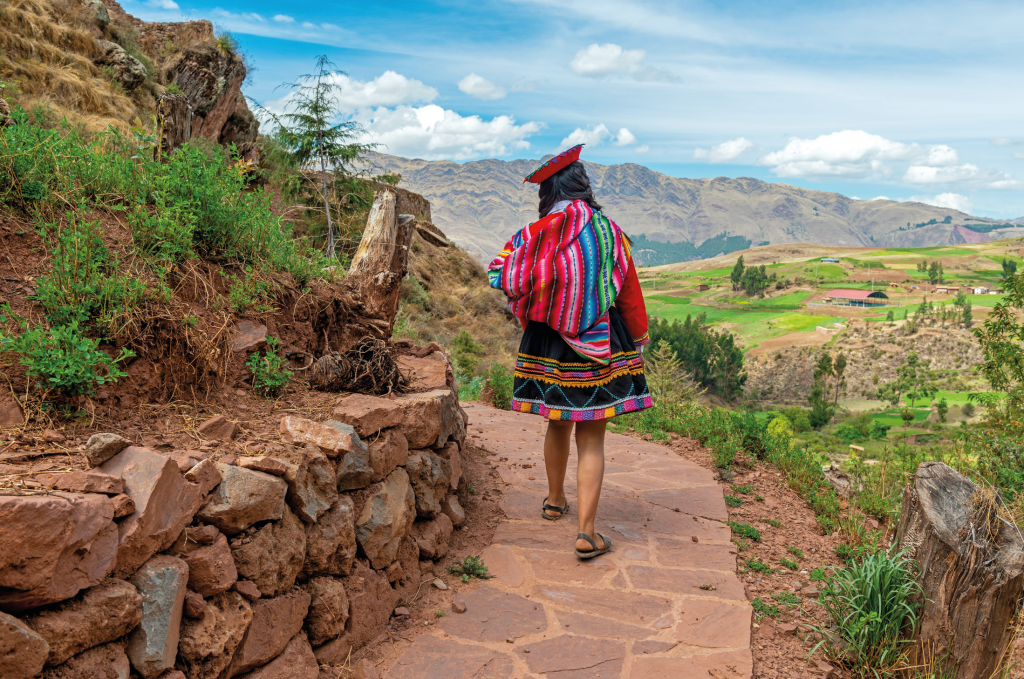
An indigenous Quechua woman walks on the Inca Trail. Credit: Shutterstock
The alternative route
If Machu Picchu is on your bucket list but you prefer your ancient ruins served up with a side helping of solitude (no permit required), there’s a longer and lesser-known alternative to the standard Inca Trail. The Salkantay trek is a high-altitude traverse of sacred Mount Salkantay. It’s slightly longer than the more famous route (74km / 46 miles 5 to 8 days instead of 3) and it skips some of the smaller ruins, but what it lacks in archaeology it more than makes up for in stunning mountain vistas.
Explore the full trekking guide to The Inca Trail.
Bucket List Trek 3: Tour du Mont Blanc
The Tour du Mont Blanc is 100 miles of tough – but not technical – high panorama mountain drama. There’s a reason it’s one of the most popular treks in Europe – but it does have a lesser trodden alternative, too.
Start/end: Chamonix, France | Length: 165km / 100 miles | Ascent: 8,917m | Season: June – September | Difficulty: Medium
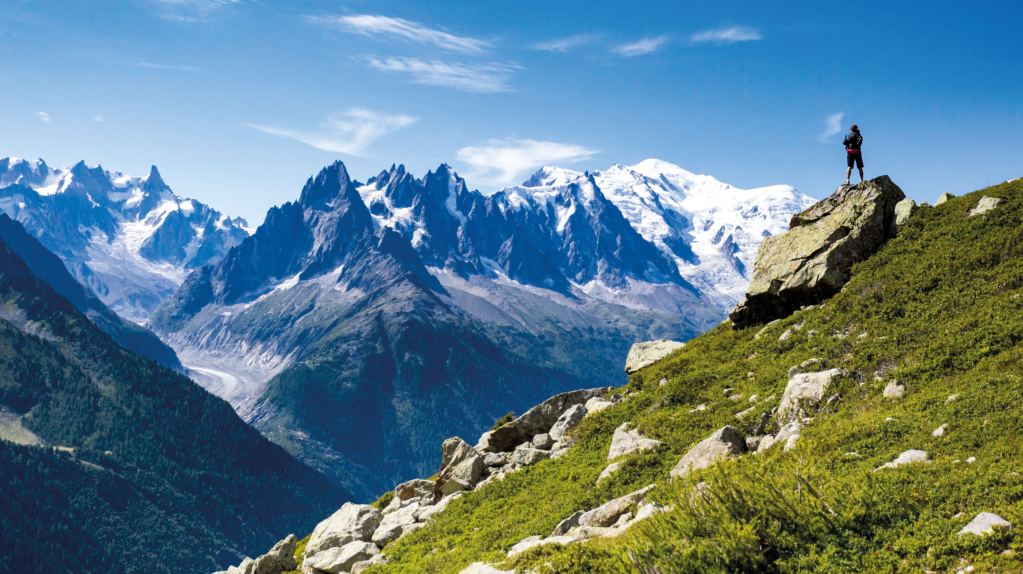
On the Tour du Mont Blanc. Credit: Shutterstock
You don’t have to get on a plane to find a bucket-list worthy trek. The Tour du Mont Blanc, one of Europe’s most famous circular routes, is just a day’s train ride away. And with 165km / 100 miles of mountainous trekking to enjoy, you get a lot of route for your modest carbon footprint.
Circumnavigating Mont Blanc will give you a good idea of just how epic in scale the Alps’ highest mountain really is. The Tour takes you through three countries – France, Italy and Switzerland – climbing more than the height of Everest and linking a string of stunning high passes along the way. Each of the eleven standard stages is packed with high panoramas, stiff ascents and a scenic pick-and-mix of different landscapes. It’s tough without being technical – although, this being the hiker-friendly Alps, if it does get too tough then there’s always a mountain refuge on hand to offer you a slap-up meal or a mug of cold beer.
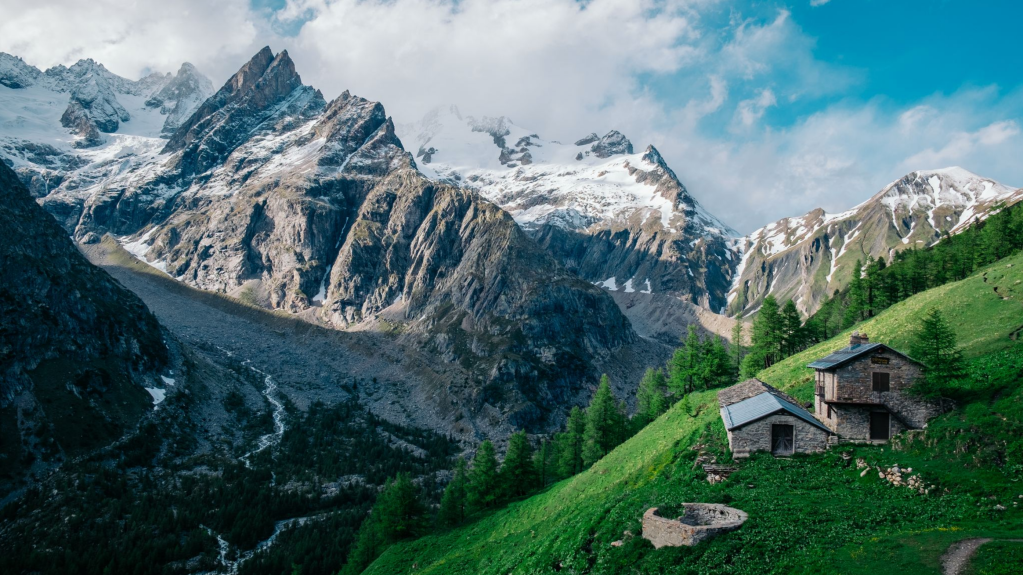
Huts on the Tour du Month Blanc. Credit: Shutterstock
For scenery, challenge, wildlife and general mountain atmosphere, the Tour du Mont Blanc can rival pretty much any long-distance route in the world. The views come thick and fast throughout the circuit – the peak-packed panorama from the Col de la Croix du Bonhomme, the giant pinnacle of the Aiguillette d’Argentiere and the thrilling exposure from the metal ladders that follow it, the balcony path below Mont Favre with Oscar-winning views of Mont Blanc, the shrinking but still spectacular line-up of glaciers.
The Tour du Mont Blanc welcomes more than 10,000 walkers every year. That’s a lot of people to avoid if you want to experience the best of this bucket list trek without bonjour-ing fellow walkers every two minutes. Your best bet is to travel outside July and August – although if you are constrained to the summer, think about hiking the TMB clockwise against the flow and mixing up the traditional stages to stay in lesser-visited accommodation (mountain huts should be booked a few months in advance for the summer months).
It’s easier to trek sustainably on the TMB than it is on many other bucket list routes. Erosion and litter are both an issue, but it’s relatively straightforward to stick to the well-constructed paths, use rubber stoppers on your walking poles and, once again, employ that trusty trowel.
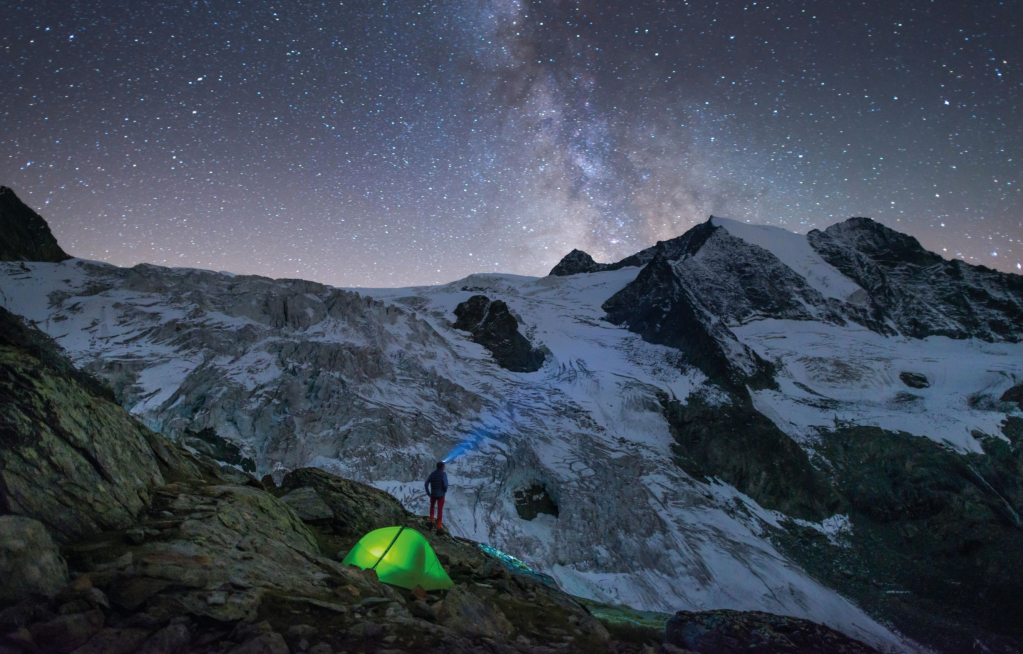
A wild camp on Walkers’ Haute Route in the Alps. Credit: Shutterstock
The alternative route
For something a little less popular and even more epic, the Walker’s Haute Route (a version of the Classic Haute Route accessible to non-mountaineers) also begins in Chamonix and serves up delectable views of Mont Blanc. Like the TMB, it strings together a selection of high mountain passes (11 in total) and involves plenty of challenging ascent. But it’s longer (221km / 137 miles) and linear, ending in Zermatt with celebratory views of the Matterhorn to enjoy.
Explore the full trekking guide to the Tour du Mont Blanc.
Bucket List Trek 4: Torres del Paine ‘W’ Trek
The goal of the Torres del Paine ‘W’ trek isn’t to summit a mountain or circle a range. It is simply to take the trekker on a tour of one of the most beautiful landscapes in the world.
Start: Refugio Torre Central | End: Refugio Paine Grande | Length: 80km / 50 miles | Ascent: 2,730m | Season: November to March | Difficulty: Medium
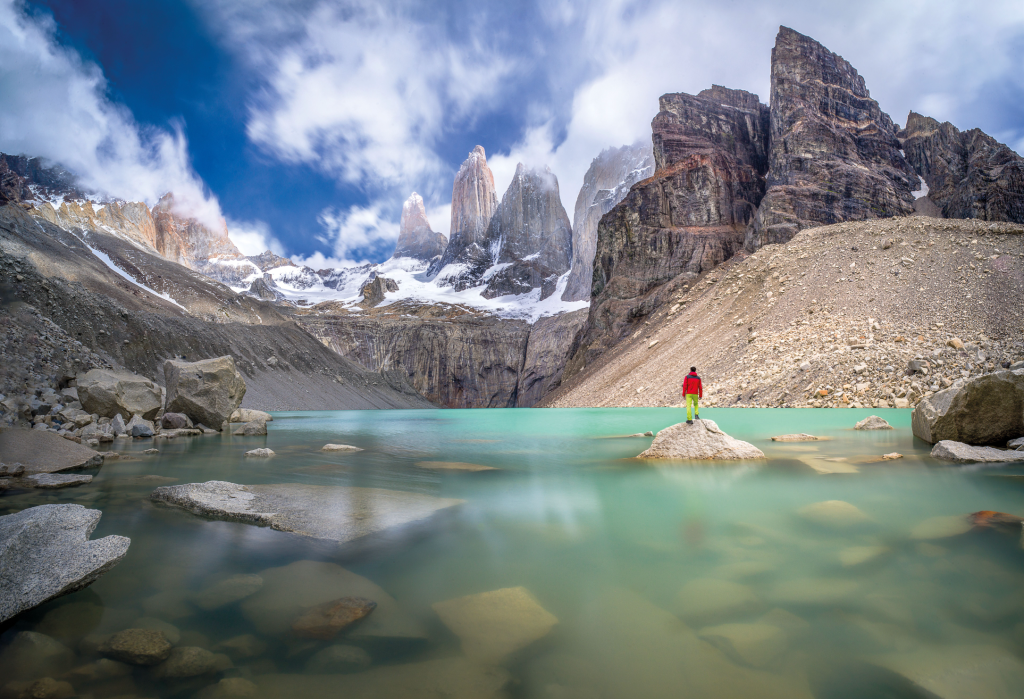
Admiring the three peaks at Base de las Torres viewpoint. Credit: Shutterstock
Patagonia’s Torres del Paine National Park is the kind of place where travel writers run out of superlatives. Vast towers of weathered granite rise like natural skyscrapers above lakes of translucent blue. Glaciers the size of inland seas surge and tumble down from wind-carved mountain ranges. Wildflowers sprout from foothills ranged by pumas and Andean condors.
Through all this natural munificence winds the 50-mile ‘W’ trek, a layercake of scenic splendour and one of the most famous long-distance walks in the world. The goal of the W trek isn’t to summit a mountain, circle a range or reach an important landmark. It is, quite simply, to take the trekker on a tour of the most beautiful landscapes in Torres del Paine without thought to start point, end point or continuity.
You’ll be rewarded with an ever-changing backdrop of incredible terrain. From the Refugio Las Torres, the route rises steeply to the base of Las Torres themselves – the ethereally-shaped pinnacles that gave the national park its name. Their bald granite silhouettes are a complete contrast to the beech woods and flower-marked slopes of the French Valley and, later on, to the multi-peaked marvels of the snowy Los Cuernos, viewed across the green shores of a mountain lake.
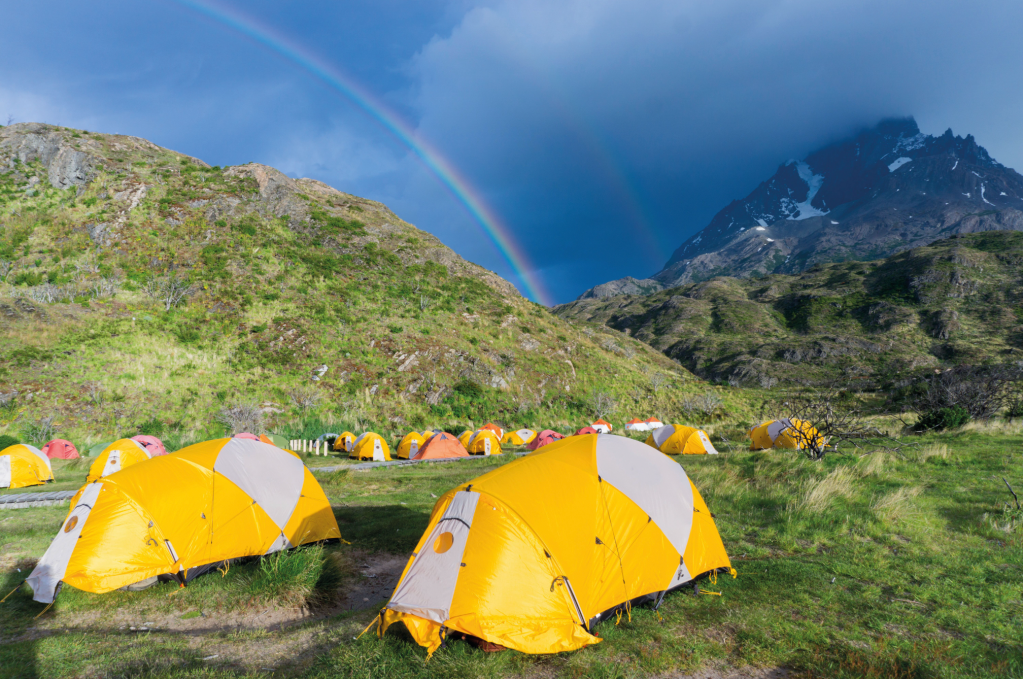
The Paine Grande campsite on the ‘W’ Trek. Credit: Shutterstock
Towards the end of the trek you’ll be blindsided by the Grey Glacier, a vast river of foaming ice that marches into the waters of Lago Grey. And, in a final burst of scenic brilliance, the W trek ends with close-up views of Paine Grande, the highest peak in the national park.
An extended alternative route
If you’re particularly crowd-adverse, there’s a quieter extension to the W trek, also named after a letter of the alphabet. The 110km / 70-mile ‘O’ trek continues the W on to complete a full loop of the Cordillera Paine mountain group. The scenery is less famous but far wilder and more remote, as you cross high passes, loop around alpine lakes and surprise unwary wildlife. Camp only in designated areas and avoid the temptation to feed wildlife to leave a lighter trace.
Explore the full trekking guide to the Torres del Paine ‘W’ Trek.
Bucket List Trek 5: Everest Base Camp
A window into the world of high-end mountaineering that few of us will otherwise get to peer through: welcome to the Everest Base Camp trek.
Start / end: Lukla Airport | Length: 130km / 80 miles | Ascent: 2,504m | Season: Late September – December and February – early April | Difficulty: Medium / high
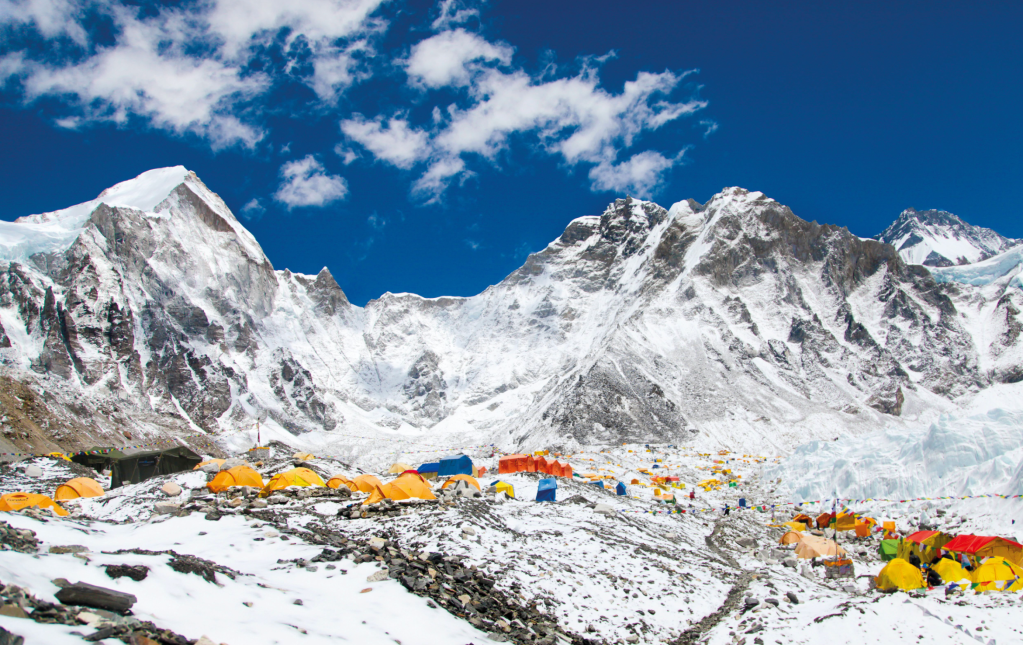
Bright yellow tents at Everest Base Camp. Credit: Shutterstock
It says a lot about the challenge of climbing the world’s highest mountain that even making it to Base Camp is a once-in-a-lifetime achievement. Most people will never stand on the summit of Everest, but looking up at that famous peak will give you a sense of grandeur and history that few other views can replicate. Why bucket list a base camp trek? Well, the big name, the even bigger scenery and the knowledge that you’re following in the footsteps of the greats are all respectable reasons. But the real appeal of Base Camp is less easy to define. The length and scale of the commitment, the immersion in local culture, the adventure involved even in getting to the local airport – all combine to offer a window into the world of high-end mountaineering that few of us would otherwise get to peer through.
For most people, the trek will begin with a flight to the tiny high-altitude airport at Lukla. It takes an average of 12 days from there to complete the there-and-back return to Base Camp (or Base Camp South as its more accurately termed) at 5,364m and the slow ascent allows plenty of time for acclimatisation.
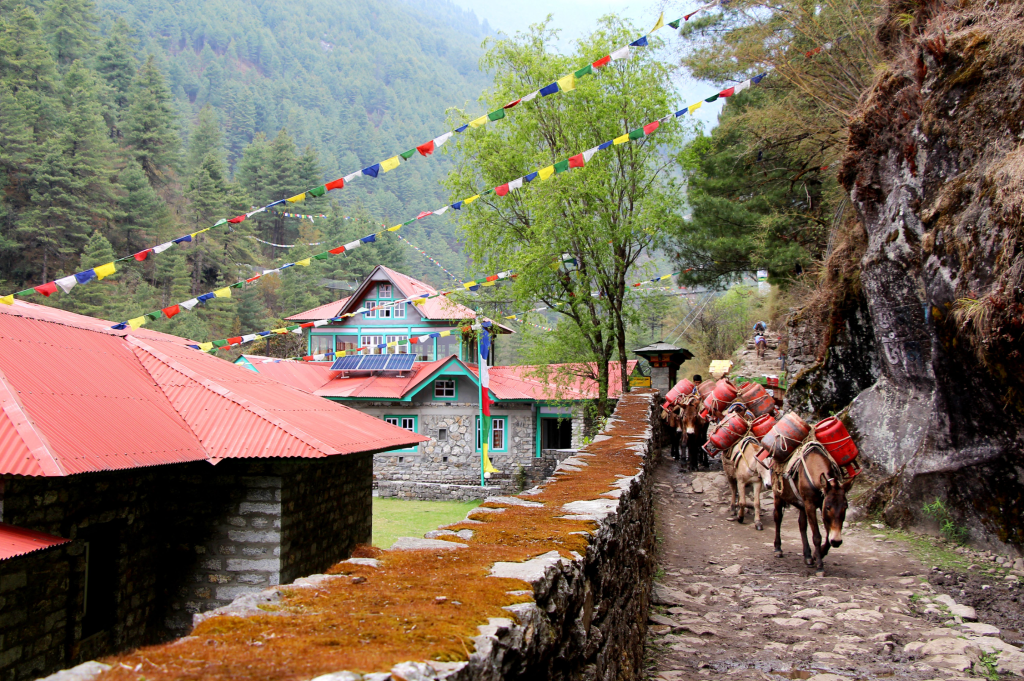
Pack mules with gas bottles walks past guest houses on the Lukla to Everest Base Camp trek. Credit: Shutterstock
With between 30 and 40 thousand people making an attempt on Base Camp every year, you’ll meet plenty of kindred souls (and yaks) along the route. Don’t let that distract you from the trek’s myriad highlights, which include the Buddhist monastery of Tengboche, Phakding’s fluttering prayer flags, the Khumbu Glacier (highest on the planet) and, of course, Base Camp itself – the boulder-strewn encampment where so many summit attempts via the South Col have started. Sleeping among the press of tents is an experience to remember.
Sadly, the bucket list treks to Base Camp aren’t all camaraderie, prayer flags and pristine views. Litter and human waste are big concerns, and Tenzi Sherpa recently described Base Camp as “the dirtiest camp I have ever seen”. He pointed the finger at some trekking companies, making it particularly important to choose an ethical guiding organisation and to take your waste home with you. Look for a guide who will bring you back via the Gokyo Lakes route for a glimpse of the Himalayas’ quieter side.
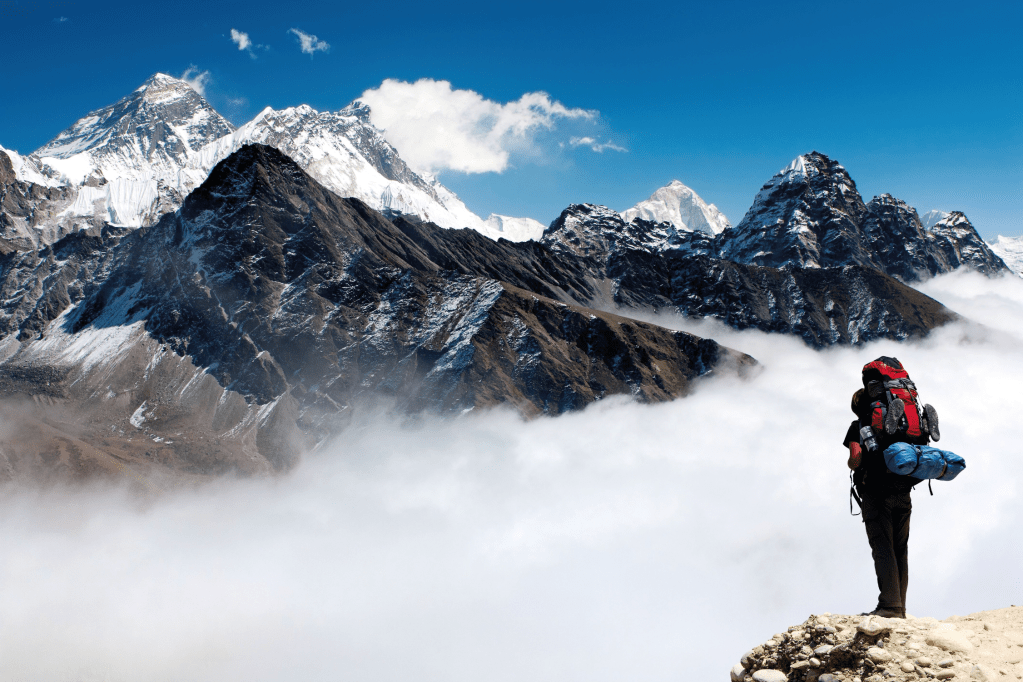
A view of Everest from Gokyo Ri. Credit: Shutterstock
An extended alternative route
Instead of making a beeline direct from Lukla to Base Camp, add a few days to your trekking schedule and go the long way round. The 166km / 103-mile Three Passes route is a two-week loop that takes in the glorious high points of Kongma La Pass (5,535m), Cho La Pass (5,420m) and Renjo La Pass (5,340m). Better views, fewer crowds, and more time in the Himalayas – what’s not to like?
Explore the full trekking guide to the Everest Base Camp.
Bonus Trek: Ak-Suu Traverse
If you’re not fussed about the “prestige” that comes with completing a famous trek, this little-known hike across Kyrgyzstan’s Tian Shan Mountains is a worthy contender for your list of bucket list treks.
Start: Jyrgalan | End: Jeti Oguz Resort | Length: 110km / 68 miles | Ascent: 7,155m | Season: June to September | Difficulty: Hard
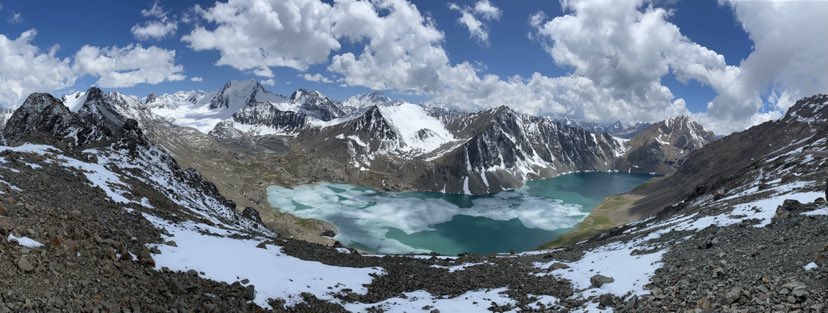
On the Ak-Suu traverse. Credit: Bryony Retter
Tell people that you’ve completed the Ak Suu Traverse and you’re more likely to get blank looks than a pat on the back for completing one of the world’s bucket list treks. But if you’re not fussed about the prestige that comes with fame, this little-known hike across Kyrgyzstan’s Tian Shan Mountains is a worthy contender for your bucket list.
Why? Well, the unearthly beauty of the high ranges that march across north-eastern Kyrgyzstan is a good place to start. This route takes in their highlights over 7 to 10 days, lurching precipitously from verdant valleys up to high passes clothed in scree and snow, then back down again past glaciers and rocky outcrops to lakes that reflect the sky and the high peaks above.
Expect some serious solitude. The Ak Suu Traverse is relatively new and largely unsung – you’ll struggle to find a friend who’s beaten you to it. With an average ascent of over 1,000m per day and a high point of 3,860m, it’s also tough enough to satisfy your thirst for a challenge.
The area is beautiful, serene and vast. You’ll feel very, very far away from the rest of the world. And the wildflowers, views and horses running free made this some of the most stunning hiking on offer globally, not to mention the hot springs At Altyn Arashan which make a heavenly mid-way point.
Alongside altitude and fitness, the two major challenges that trekkers face on the Ak Suu Traverse are planning and navigation. Bryony used AllTrails and written guides as well as taking a paper map, but if you’re not confident in your navigational abilities then a guide is a good idea as there are no trail markings. Wild camping is the only option most nights and there’s nowhere to stock up on food other than Altyn Arashan at the midway point, so most trekkers hire a porter or arrange for food trips. All this enforced self-sufficiency makes it a trickier prospect than the famous treks here… but perhaps even more exciting.
Explore the full trekking guide to the Ak-Suu Traverse, your bonus bucket list trek.
If you’re looking for a long-distance bucket list trek closer to home, why not check our our experts’ picks of the best trekking trails in the UK?

